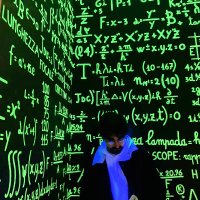
Martin Hebart
@martin_hebart
Proud dad, Prof. of Computational Cognitive Neuroscience, author of The Decoding Toolbox, founder of things-initiative.org @ martinhebart.bsky. social
ID: 3318578529
http://hebartlab.com 11-06-2015 09:09:30
3,3K Tweet
5,5K Followers
790 Following


I wrote a commentary on a very nice research paper that just appeared in Brain by Selma Lugtmeijer (she/her) Aleksandra Sobolewska Steven scholte. Spoiler: It's about modularity in mid-level vision. Here is the original paper: doi.org/10.1093/brain/… And here my commentary: doi.org/10.1093/brain/…




Programming is essential for modern research in neuroscience and psychology. This Primer introduces ten principles guiding researchers toward writing clear, adaptable, and easily shareable code, ultimately supporting reproducible science. Martin Hebart nature.com/articles/s4427…



The Brady Lab will be at #VSS2025 VSS Meeting this year! Here's a thread with some of the cool work we're coming to share:









